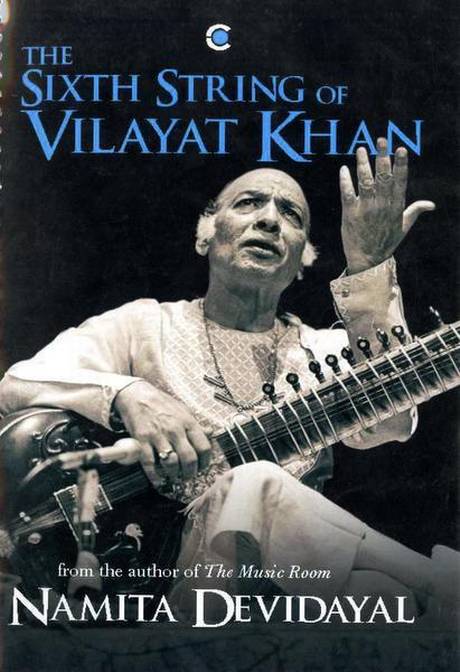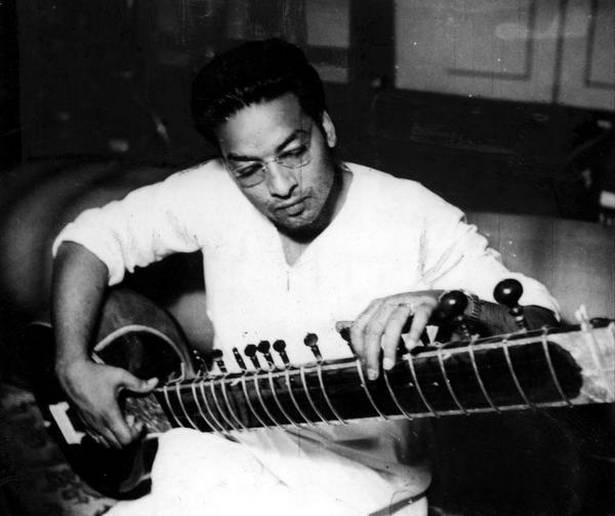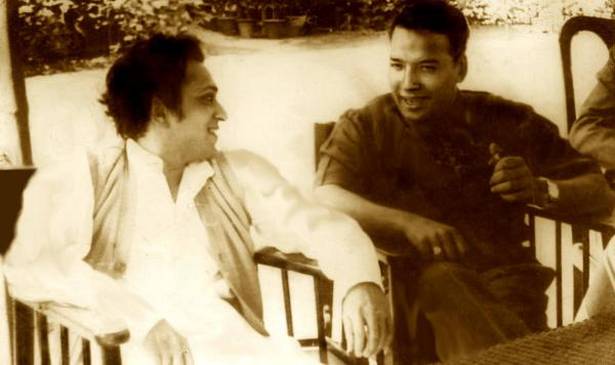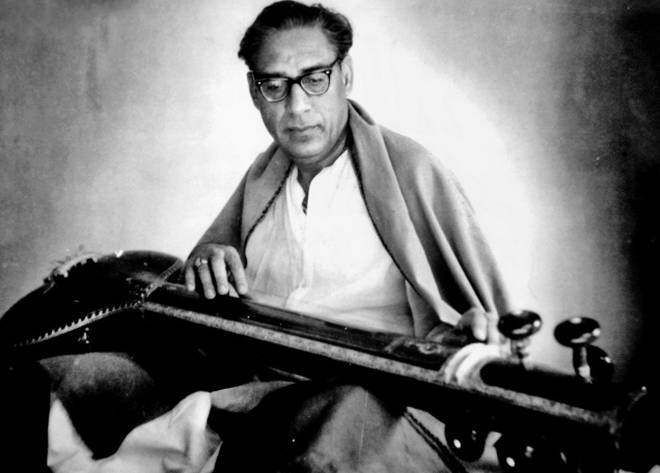KOLKATA / MUMBAI / U.S.A. :
Namita Devidayal’s book on Ustad Vilayat Khan is an interesting account of his life and musical journey
Writing the life sketch of a legendary musician such as Ustad Vilayat Khan is no easy task. Going by his lineage, stature, proficiency and lasting influence, summing up his music and personality in 252 pages is like exploring a raga in five minutes. Yet, such an attempt is important to enable young musicians to imbibe from his distinctive style and virtuosity.
The book, The Sixth String of Vilayat Khan, has been authored by Namita Devidayal, who had earlier penned the bestseller, The Music Room: A Memoir. Namita says she has tried to create an impressionistic fluid portrait — of a magnificent artiste and a fragmented human being. “I have tried to imagine him and tell a story anchored in fact but narrated with poetic license, like improvising on a jazz standard. It would be a mistake to regard this strictly as a biography.”
The book is an outcome of Namita’s long discussions with people who were close to the Ustad and his family and through interviews, archival records and photographs.
Vilayat Khan was 10 when his illustrious father Enayat Khan passed away, but not before inducting his son into the legacy of the greatest sitar gharana (his grandfather was Imdad Khan, who undertook the tough 40-day chilla ritual, when the musician does not step out of the house and only practises).
As a young lad, living in Calcutta, in a house named ‘Riyaz,’ Vilayat had only the sitar for a friend. He was eight when he performed at the All-India Bengal Music conference and earned immense praise. The Megaphone Recording Company even came up with a 78 rpm featuring the father on one side and the prodigious son, on the other. But his father’s untimely death left Vilayat shattered, both monetarily and musically.
The book gives a detailed account of how Vilayat fought hardships to become one of India’s foremost musicians. One night, he left home with his sitar, swearing to return only as an accomplished musician. He boarded a train to Delhi and reached his destination thanks to kind-hearted ticket collectors.
He went straight to All India Radio; the station director recognised him as Enayat Khan’s son and gave him refuge in the station’s garage. He used to have food from the canteen and clean instruments in the studio. He was delighted to see eminent artistes walking AIR’s corridors and listen to the recordings of musical greats.
Packed with interesting anecdotes and providing insights into the artistic ambience of the time, the author takes the readers through Vilayat’s training under his maternal grandfather (Bande Hasan Khan) and uncle (Zinda Hasan Khan), who were vocalists and would come to Delhi to teach him. Sometimes, Vilayat visited their house in Saharanpur. Bande Hasan Khan was also a wrestler and took his grandson to the akhada to build his stamina.
Vilayat’s mother Basheeran Begum was happy that her family had undertaken the responsibility of his training, but her son’s growing fondness for singing worried her. She warned him about breaking the family tradition. A distraught Vilayat approached his uncle, who advised him to make his sitar sing instead. So he began to consciously nurture the gayaki ang in his instrument. The Ustad, who was also an accomplished surbahar player, once said, “When I sit down on stage to play, everything comes to me in the form of a vocal performance. It just happens.”
An entire chapter is devoted to the 1944 Vikramaditya Music Conference in Bombay, where a sitar maestro called Vilayat Khan was born. Soon he became a regular at prestigious festivals and private concerts. At the same time, another sitar exponent, Ravi Shankar was making a mark too. Though stories of their rivalry were spoken about in music circles, both had tremendous respect for each other.
Vilayat’s tryst with fame, money and the film industry (among his close friends were Naushad and Madan Mohan) began when he moved to Bombay. It was also where he met his disciple Arvind Parikh, who came from a Gujarati business family. A devoted shagird, Arvindbhai also became his close confidante. By 1950, Vilayat Khan began touring the world.
His preparation for concerts included planning his attire. The book talks about how he would often have a dress rehearsal in which the entire family would be forced to participate. Even his silver and carefully-designed paan box had to be set the night before a performance. He loved the good life, traditional when it came to his art, while preferring to be up-to-date in his appearance. From Bombay, he moved to Shimla, to enjoy the quietude of the hills, and then to the U.S.
While drawing the portrait of an older Vilayat Khan, Namita touches upon his uneasy relationship with his son Shujaat Khan, a well-known sitar player and his younger son Hidayat Khan’s struggle to live up to his father’s expectations.
In 2004, after traversing the highs and lows of life like the notes of his strings, the Ustad died of lung cancer. In his hands, the sitar gained a beautiful voice.
source: http://www.thehindu.com / The Hindu / Home> Entertainment> Music / by Chitra Swaminathan / November 08th, 2018












